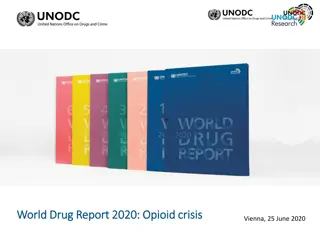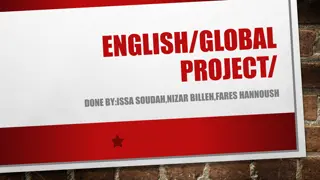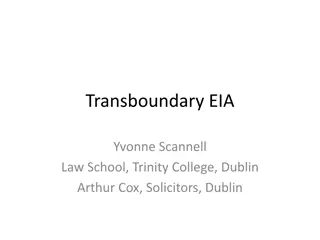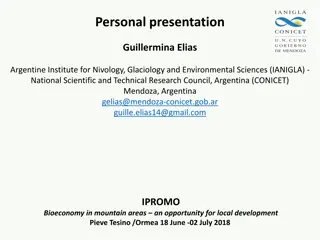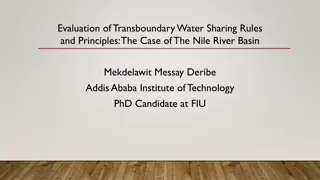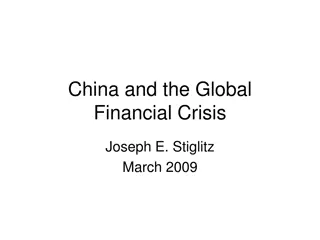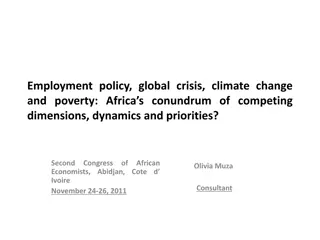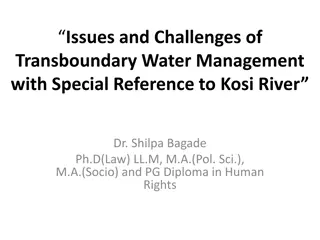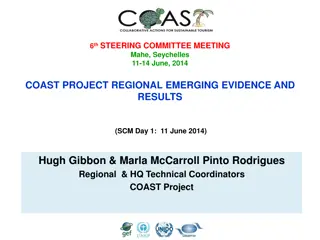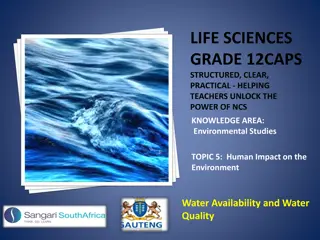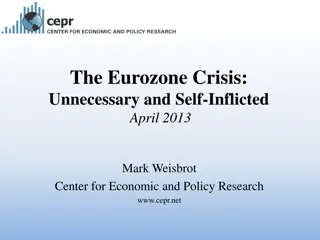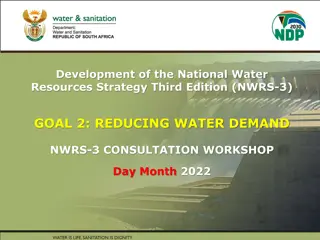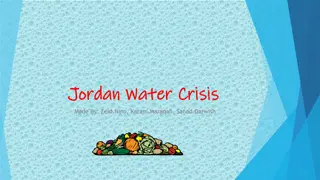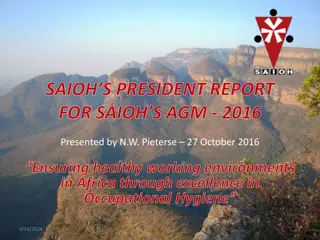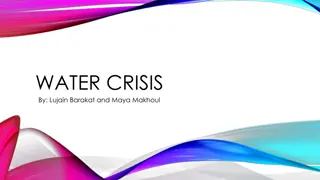The Global Water Crisis and Transboundary Issues in Southern Africa
The global water crisis is a pressing issue affecting millions worldwide, with about 700 million people currently living below the water-stress threshold. By 2025, this number is projected to reach 3 billion. The increasing pressure on shared water resources in countries like Botswana, Namibia, and South Africa highlights the critical need for sustainable water management practices. International rivers play a crucial role in providing water for these nations, but challenges such as growing populations, economic demands, and climate change effects pose significant threats to water security. The Orange Senqu Basin and sub-basins, as well as the Orange River Basin, are key areas facing transboundary water management challenges in the region. Country contributions to water supply and usage vary across Botswana, Lesotho, Namibia, and South Africa, highlighting disparities in resource management and allocation. Transfers of water into and out of the basin, along with precipitation patterns in Namibia, Botswana, Lesotho, and South Africa, further underscore the complexities of water management in the region.
Uploaded on Sep 07, 2024 | 4 Views
Download Presentation

Please find below an Image/Link to download the presentation.
The content on the website is provided AS IS for your information and personal use only. It may not be sold, licensed, or shared on other websites without obtaining consent from the author.If you encounter any issues during the download, it is possible that the publisher has removed the file from their server.
You are allowed to download the files provided on this website for personal or commercial use, subject to the condition that they are used lawfully. All files are the property of their respective owners.
The content on the website is provided AS IS for your information and personal use only. It may not be sold, licensed, or shared on other websites without obtaining consent from the author.
E N D
Presentation Transcript
The Global Water Crisis Today, about 700 million people in 43 countries live below the water-stress threshold of 1,700 cubic metres per person per year. By 2025 that figure will reach 3 billion. About 40% of the world s population lives in basins of international rivers Over 90% of the world s population lives in the countries that share these basins
Increasing pressure on shared resources Water is a critical limiting resource to development in Botswana, Namibia and South Africa. International rivers form an increasingly important source of water for all three countries Internal water resources are reaching the limit of sustainable exploitation Populations and economies continue to grow Demand on shared water resources will increase Allocation of shared water resources will become increasingly contentious. Also concerns about deteriorating water quality and ecosystem health, and effects of climate change
The Orange Senqu Basin and sub-basins (Source: Orange-Senqu River Basin. Preliminary Transboundary Diagnostic Analysis)
The Orange River Basin (Source: WRP)
Country contributions to area, runoff and water use (Data from Heyns, 2004)
100% 90% 80% 70% Water supply contribution (% of total) 60% 50% Water use ( % of total) 40% 30% 20% 10% 0% Botswana Lesotho Namibia South Africa Relative contribution by country: water supply and use
Namibia Botswana Precipitation mm 0 250 251 350 351 500 501 700 700 + Lesotho South Africa Precipitation in the basin
Annual groundwater recharge in the basin (Igrac 2005)
Projected Water Stress in 2025 (Source: Transboundary Freshwater Dispute Database, Oregon State University)
Projected Rainfall variance in Africa (until 2099) as a result of climate change (Source: Christensen et al., 2007) Projected temperature variance in Africa (until 2099) as a result of climate change (Source: Christensen et al., 2007)
Major Infrastructure Katse Dam Gariep Dam
Wetlands Letseng-la-Letsie, suggested Ramsar Site
Population Density (Source: Orange-Senqu River Basin. Preliminary Transboundary Diagnostic Analysis)
% of national pop in basin Total population Population in basin % of total basin population Country 1 680 863 47 661 3% 0.30% Botswana 2 127 539 2 127 539 100% 13.56% Lesotho 1 830 330 163 093 9% 1.04% Namibia 44 819 778 13 357 298 30% 85.10% South Africa Total 50 458 510 15 695 591 31% 100.00% Basin population characteristics 2001 (Source: WRP Consulting Engineers, Jeffares & Green, et al. (2007). Orange River Integrated Water Resources Management Plan (GTZ))
Population and economy Population (thousands) Lesotho South Africa Botswana Namibia GDP (million US$)
Economic benefits from water To be completed still.... Royalties to Lesotho from LHWP as % of GDP Economic value of water to RSA? Tourism value of Fish river canyon? Tourism value of Orange?
Population Growth Trends in Orange Basin States 60 50 Millions pop. 40 Urban 30 Rural 20 10 0 1950 1960 1970 1980 1990 2000 2010 2020 2030
Water demands at 2005 development levels (Source: DWAF)
Water use by sector in the Orange Senqu basin (2000) Agriculture Urban Rural domestic Other 7% 6% 23% 64%
100 90 80 70 Agriculture 60 Urban 50 Rural domestic 40 Other (includes Mining and Hydropower) 30 20 10 0 Upper Vaal Middle Orange Lower Orange Water use by sector in the Orange River sub-catchments (Source: A preliminary basin profile of the Orange/Senqu river Earle et al)
Areas under irrigation and water supply schemes in the South African part of the lower Orange River Basin (Source: DWAF, 2004)
700 600 Botswana 500 Lesotho Domestic, Industrial & Mining Lesotho Irrigation 400 Namibia Domestic, Industrial & Mining 300 Namibia Irrigation (Lower Orange) 200 South Africa Domestic, Industrial & Mining 100 South Africa Irrigation 0 2005 2015 2025 Expected increases in consumptive water use by sector and country (Mm3 pa) (Source: A preliminary basin profile of the Orange/Senqu river Earle et al)
Ecological requirements Currently available for South Africa and the LHWP only fairly large accounts for 24% of water Ecological requirements for Namibia must still be determined and met
Water quality Surface water quality in Upper Orange area is generally good Effluent discharges from wastewater treatment plants and agricultural activity (in Upper and Middle Vaal areas) have increased nitrate and phosphate loads Salinity levels in Upper Orange area are fairly low Salinity in other parts of basin high due to : Wastewater treatment plant discharges, particularly in the Vaal catchment Underground water pumped from mines, particularly in the Vaal catchment Irrigation return flows, particularly in the Vaal catchment and lower Orange River area High evaporation rates combined with low rainfall in the lower Orange River area
Key challenges in the Orange Senqu basin (Source: GTZ)
Water Management Options Increased storage Water conservation and demand management Water quality management Habitat protection and restoration
Joint Technical Committee 1978 Joint Lesotho Highlands Water Commission 1999 Lesotho O R A S E C O M Permanent Technical Committee 1986 South Africa 2 0 0 0 Permanent Water Commission & Joint Irrigation Authority 1992 Joint Technical Committee 1987 Namibia Botswana Developments in transboundary History of Transboundary Institutional Arrangements in the Orange Senqu Basin institutional arrangements in the basin
What is Orasecom? November 2000: 4 Basin States signed agreement to establish the Orange-Senqu River Commission ORASECOM Each Party is represented by 3 members ORASECOM is limited to giving advice and recommendations to Parties The Parties can assign functions to ORASECOM It is empowered to undertake studies to provide advice and recommendations. Advice must include costing and apportionment of costs Agreement does not affect rights and obligations under existing bilateral Agreements
Orasecom structures GOVERNMENTS OF THE MEMBER STATES EXISTING BILATERAL ARRANGEMENTS SADC Water Division Oversight and Monitoring ORASECOM COUNCIL TECHNICAL TASK TEAM LEGAL TASK TEAM COMMUNICATIONS TASK TEAM GROUND WATER TASK TEAM SECRETARIAT SUPPORT = Recommendations from ORASECOM
Challenges To be completed... No clear mandate w.r.t groundwater Capacity Role
Orasecom projects 2007/8 2009 2010 2011 2012 Theme 1. Institutional and Organisational Strengthening Review of Legal issues Review of Institutional arrangements Establishment and support to Secretariat and other ORASECOM Institutions Establish and support ORASECOM technical working groups Development of implementation programme Development of mechanism to mobilise funds for conservation of catchment Creation and support to sub-basin stakeholder councils /committees Theme 2. Specific Capacity Building on Shared Watercourses Management Development of national coordination framework for implementation of IWRM Capacity building for technical staff and water resources practitioners in IWRM International Congress on Basin Commissions, lessons learnt and secondments
Orasecom projects 2007/8 2009 2010 2011 2012 Theme 3. Development of Shared Information System Creation of integrated GIS database Review / quality assurance of existing databases for data exchange and integration Design of common basin observation and monitoring system Theme 4. Enhancing ORASECOM Communication and Awareness Building Awareness raising on ORASECOM Raising awareness among general public Preparation and publication of "State of the Environment report" TDA revised, updated and disseminated
Orasecom projects 2007/8 2009 2010 2011 2012 Theme 5. Specific Transboundary Projects and Studies Assessment of water demand and potential for savings through demand management Surface water yield assessment taking into account climate change Determination of catchment boundaries based on contribution of base flow from ground water Ground water review review and feasibility study of water resources of the Molopo-Nossob Assessment of Environmental Water Requirements in Lower Orange-senqu and other selected points and proposal of harmonised methodologies Assessment of development and use of marginal waters Assessment of water quality and catchment degradation Integration of invasive species eradication programmes Theme 6. Promotion of Conservation and Environmental Strategies and Policies Development of basin wide IWRM Plan
A strong ORASECOM will... Provide implementable advice and recommendations to Parties. consistent with financial and resource constraints allowed within law Realise the vision of the SADC protocol Support National Developmental Trajectories Be seen to be equitable and reasonable Provide a level playing field for Delegations and Task Teams to raise issues and concerns Foster active discussion of new approaches to improve livelihoods of people of the basin. Facilitate access to finance and technical support for implementing recommendations
A strong ORASECOM will... Provide clear guidelines on equitable and reasonable sharing of water and benefits from water use as well as significant harm Demonstrate how the water resources of the Basin can improve the livelihoods of all its people. Provide for the protection of the water environment across the whole basin. Strengthen regional cooperation across all sectors, and will set the bar high for regional cooperation. Provide a repository for information on the transboundary water resources issues of the basin.



